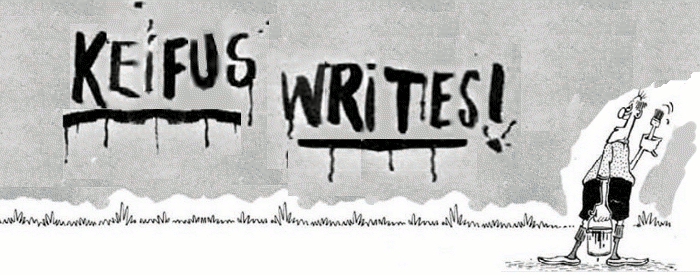Electrons vs. Animals
This didn't really belong in Arch's book review. I was tempted to make some fun analogies inspired by Gould's book on punctuated equilibrium.
I liked his idea of pseudo-individuals in nature. If you ever get into the funny intersection between materials science and physics, you'll find no shortage of pseudo-particles, much like pseudo-individuals (i.e., species) in Gould's formulation. This is done because it simplifies complex interactions both mathematically and conceptually. It's difficult to solve electron wave functions for a molecule, never mind an assembly of molecules, and never mind a big pile of randomized but anisotropic crap that might be an organic solid. So you represent actual electrons with "free electrons," which have an effective mass due to the varying interactions that the natural particles have with the assembly of atoms that they move through. You look at an electron vacancy (a "hole") in exactly the same way, and that's not a particle at all. When you try to understand what goes on in transistors and diodes, you're counting some entities that aren't electrons exactly, but mathematical constructs sufficiently related to electrons for the purposes of description at the right scale.
Or take another example. Below is a graph that any freshman chemist would recognize, called a reaction coordinate. (Chemistry is actually another fudging of electronic motion, but that'd be digressing even further.) Molecules have some stability in an initial state (they exist in a free energy minimum), and they can combine (in the illustrated case) to make another stable state. To get from one to the other, however, takes a lot of stress applied to the system (usually in the form of increased temperature), and the two molecules must get distorted uncomfortably as they move over the hump. To me, this looks a whole lot like punctuated equilibrium as Gould describes it. Consider further that each point on the graph really represents a whole population of similar probabilistic and dynamic states much like species are a distribution of individuals. Some subset of them will be stressed enough to change into another stable population. In the chemical analogy, even if some transition states can be identified, it's still a rare and short-lived meeting of A and B individuals, twisted far in energy from where they usually like to be. Chemical engineers call it "collisions" and are done with it except for the probability. Physical chemists care a little more about the individual mysteries of what's just so at that high energy interaction, but even then, any individual is only understood in a universalist Platonic sort of way. It all makes throwing thermodynamic analogies at evolution seems less abstruse.
I find this energy map a useful way of looking at things in general, and it gets into my world view all the time. We fall into minimums of energy that are hard to get out of. On the other hand, transitions are fast between those periods of stasis. I think it's an analogy that Stephen Jay Gould would have avoided, but I also think it's how he would have dearly loved to regard his contribution to paleontology.
Anyway, I'm taking a break (really, really now) as I party it up in Seattle. I'll be back Wednesday, and I'll be fun again, I promise.

No comments:
Post a Comment